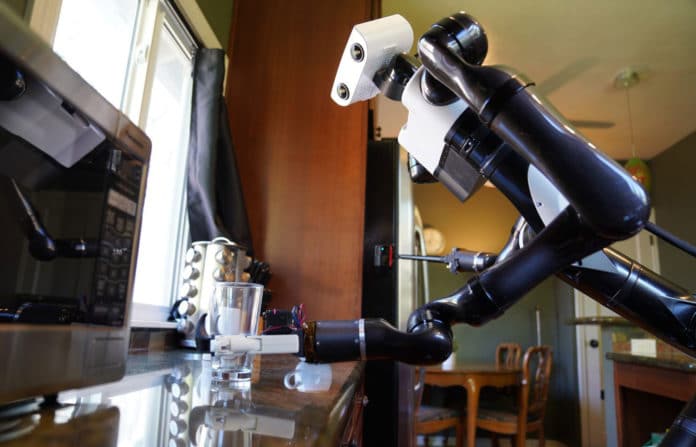Many robotics companies have been confronted with the problem of transparent and reflective surfaces without ever really finding a solution. This is a serious problem for robotics companies, which in particular are developing robots for household chores, where there are many glazed surfaces.
California-based Toyota Research Institute (TRI) has developed a solution for the issue and has released a video demonstrating its robot cleaning tables and other surfaces – all while making the video itself. TRI roboticists were able to train robots to understand and operate in complicated situations that confuse most other robots, including recognizing and responding to transparent and reflective surfaces in a variety of circumstances.
Regarding this issue, Toyota says, “most robots are programmed to react to the objects and geometry in front of them.” So, inevitably, robots cannot differentiate between an actual object and its reflection. They are easily fooled by a glass table, shiny toaster, or transparent cup, which can prevent home-based robots from doing their chores properly.
Toyota says it has overcome this problem by developing a new training method that allows robots to “perceive the 3D geometry of the scene while also detecting objects and surfaces.” Toyota’s robot is able to identify these objects and move them carefully out of the way using a gripper.
In the video, you’ll see the kitchen robot seeing the 3D geometry of various elements of a house, allowing it to recognize all kinds of wipeable surfaces, such as tables and counters. It can even detect clear glasses and move them aside.
“Our goal is to build robotic capabilities that amplify, not replace, human abilities,” said Max Bajracharya, vice president of robotics at TRI. “Training robots to understand how to operate in home environments poses special challenges because of the diversity and complexity of our homes where small tasks can add up to big challenges.“
The surface-wiping robot is hardly going to solve the most pressing issues linked to an aging population. However, these incremental improvements in robot technology can pave the way for new, more ambitious projects that could one day contribute to society in a meaningful way.
